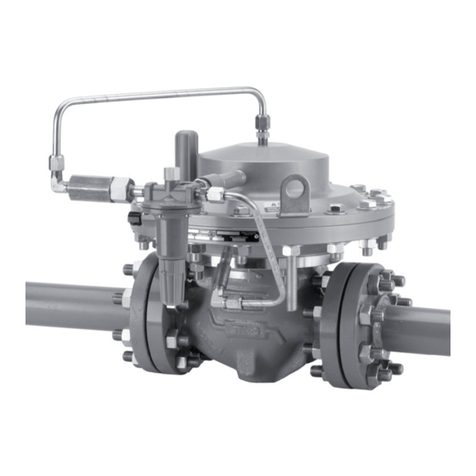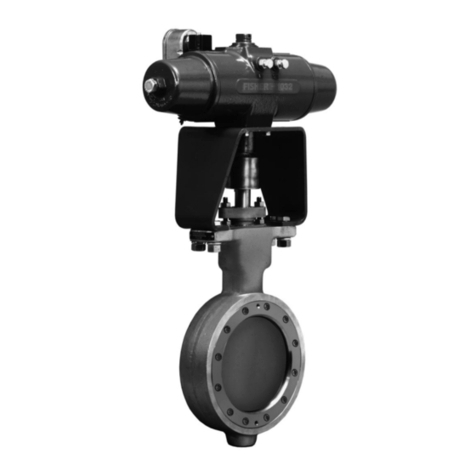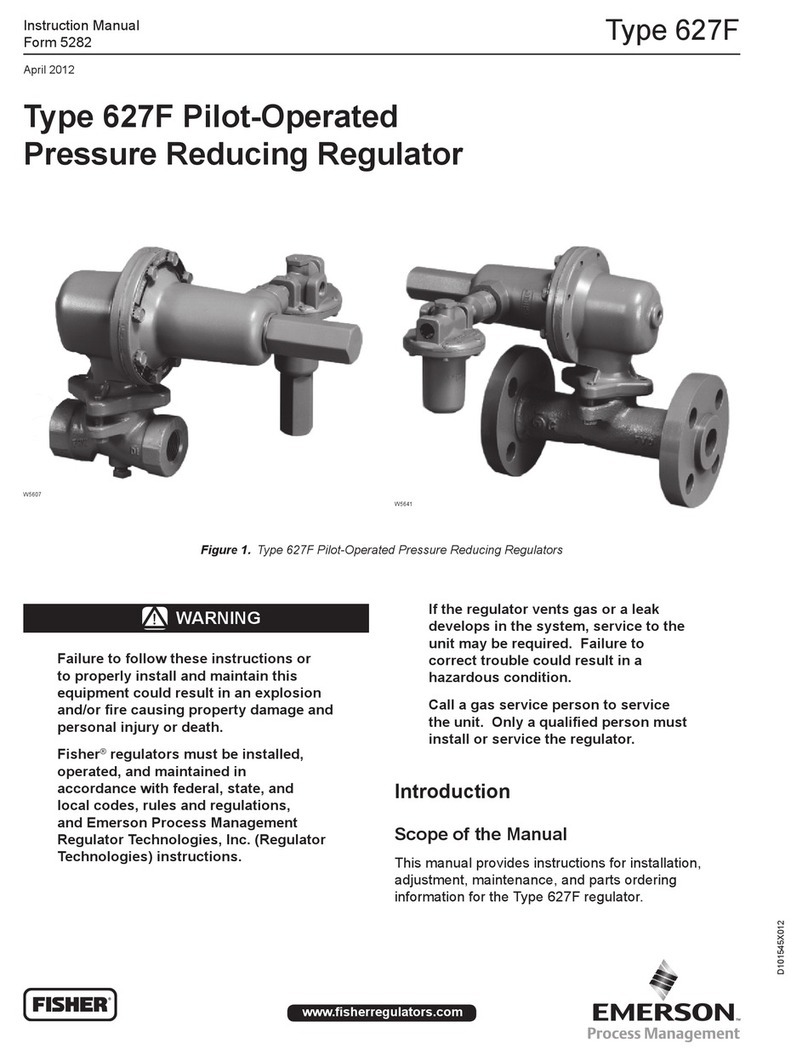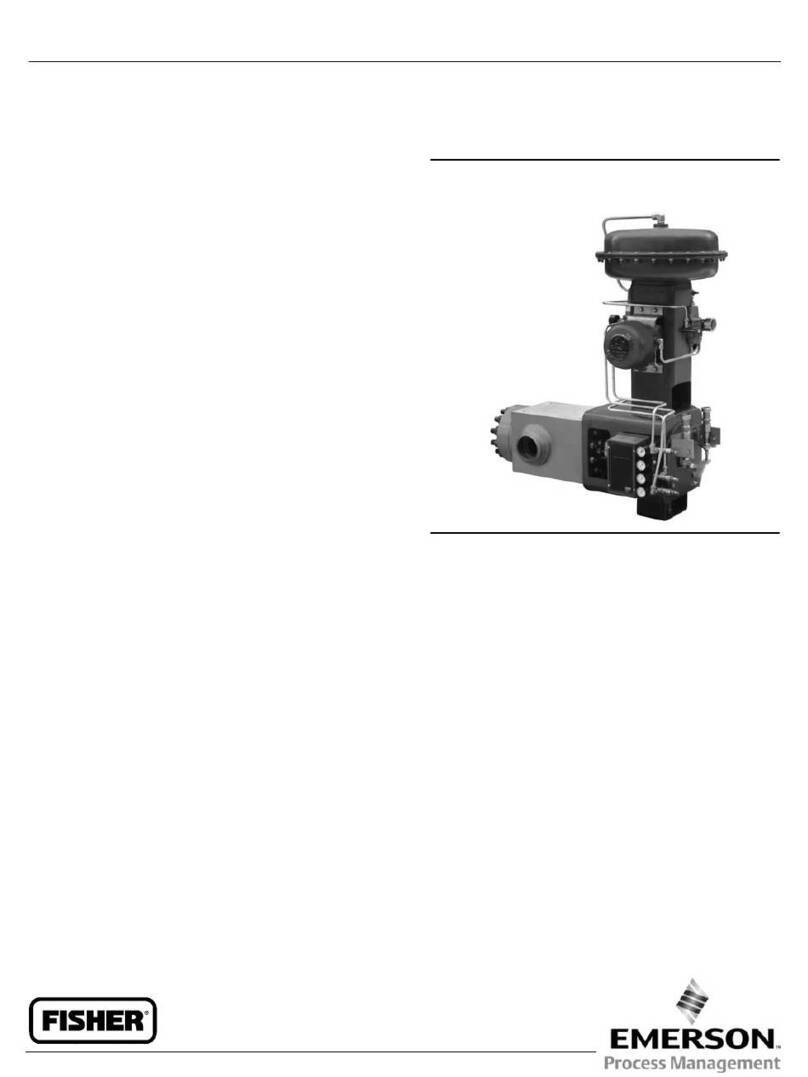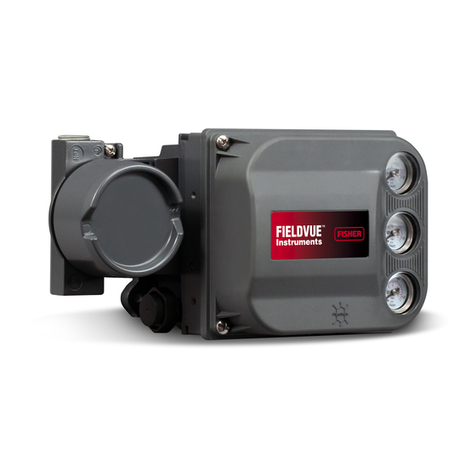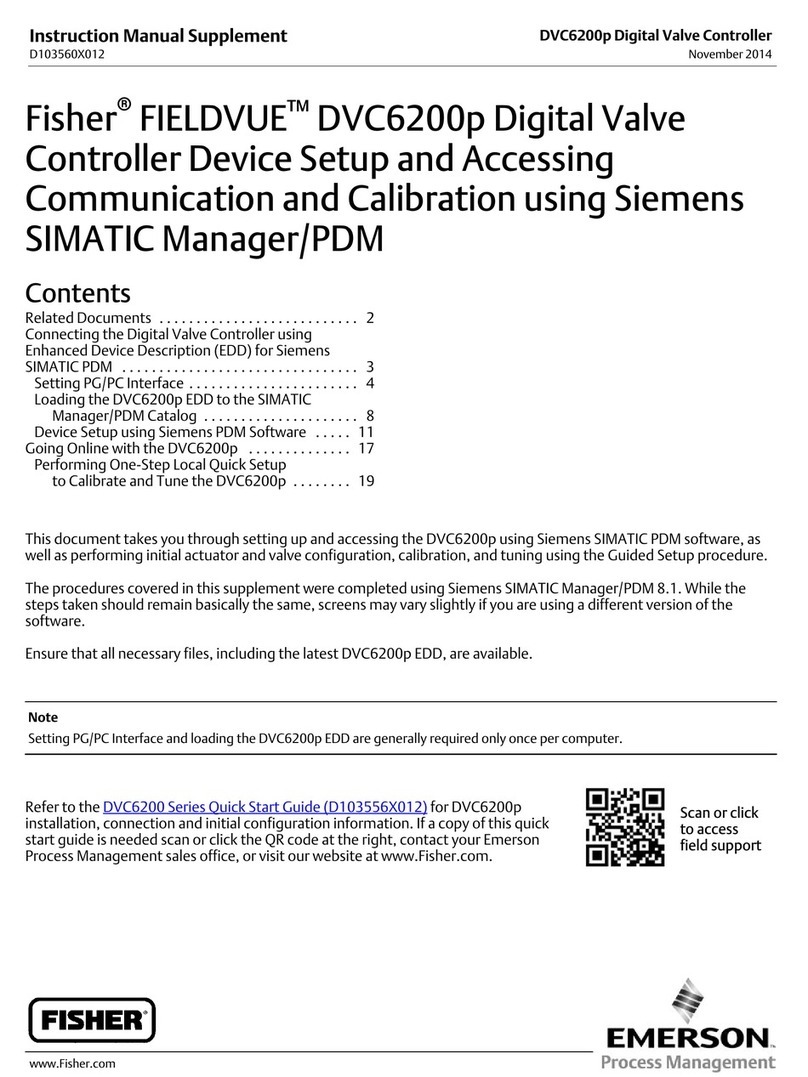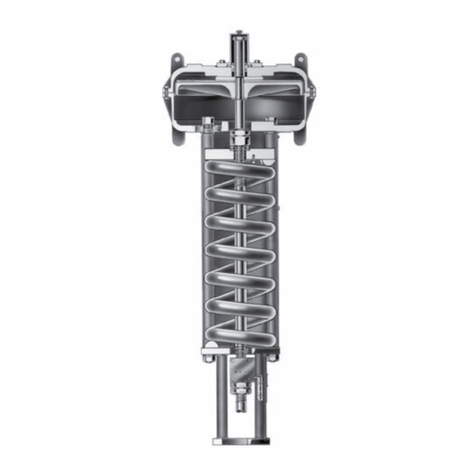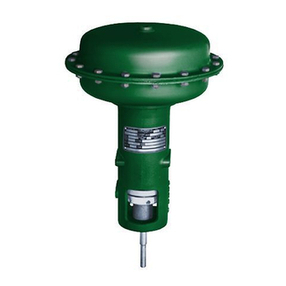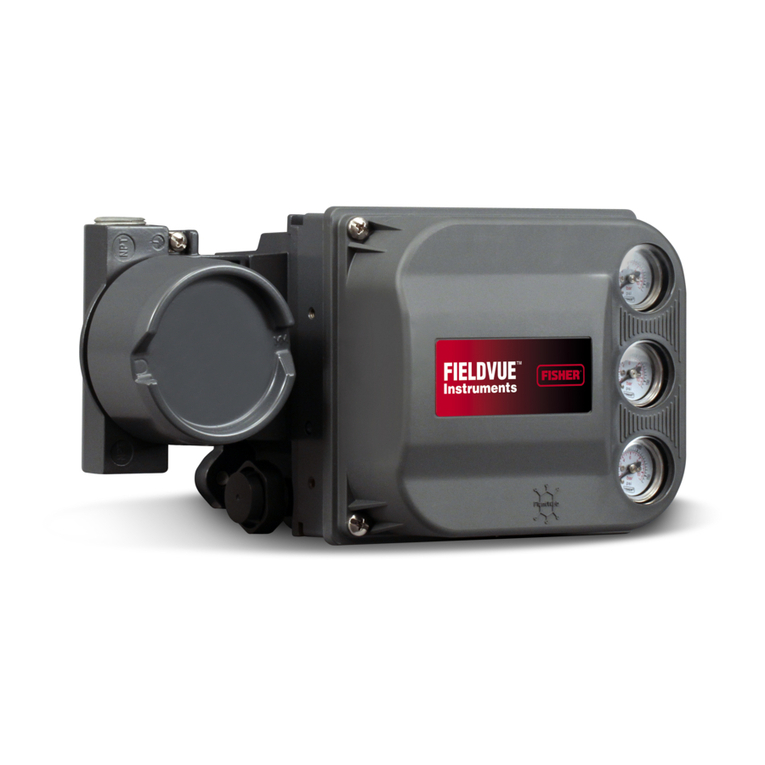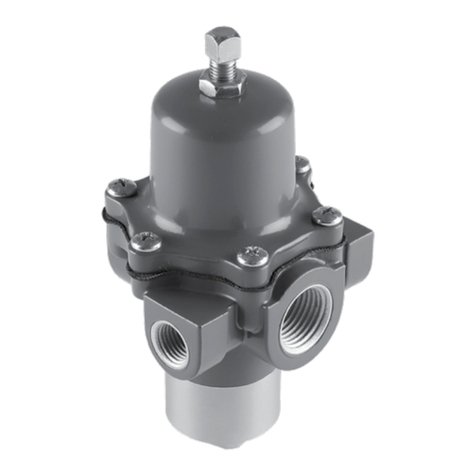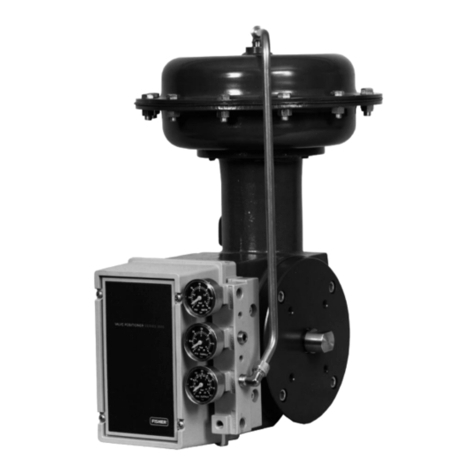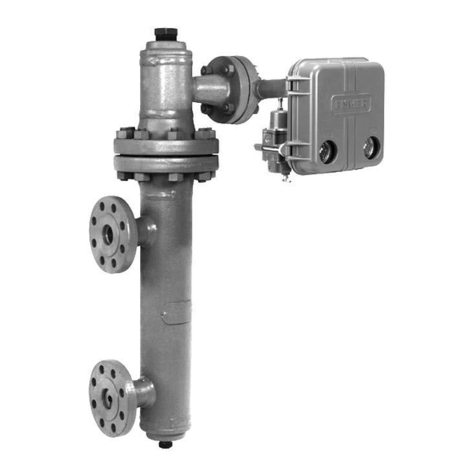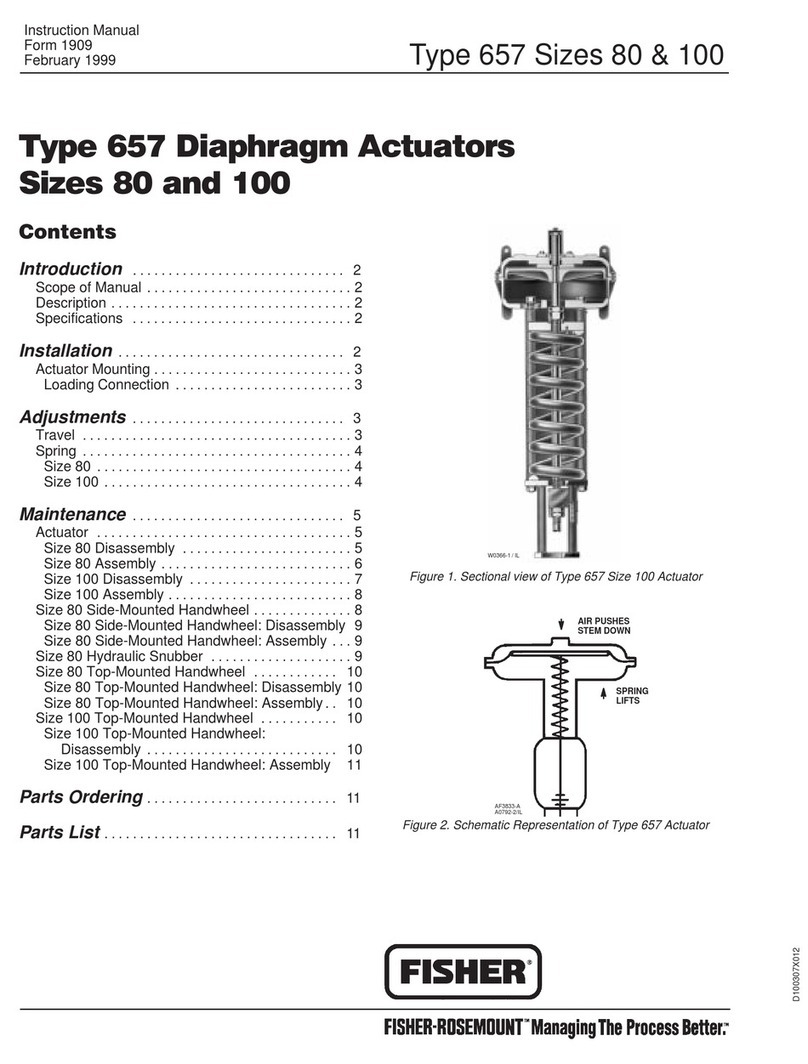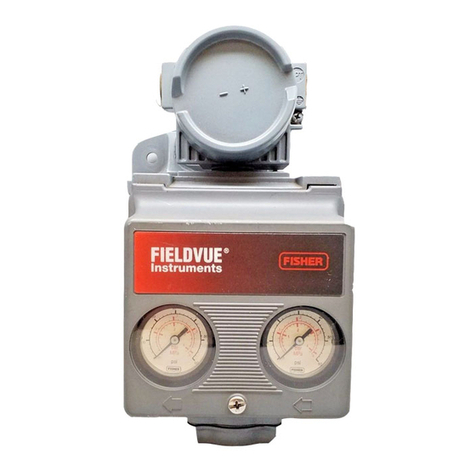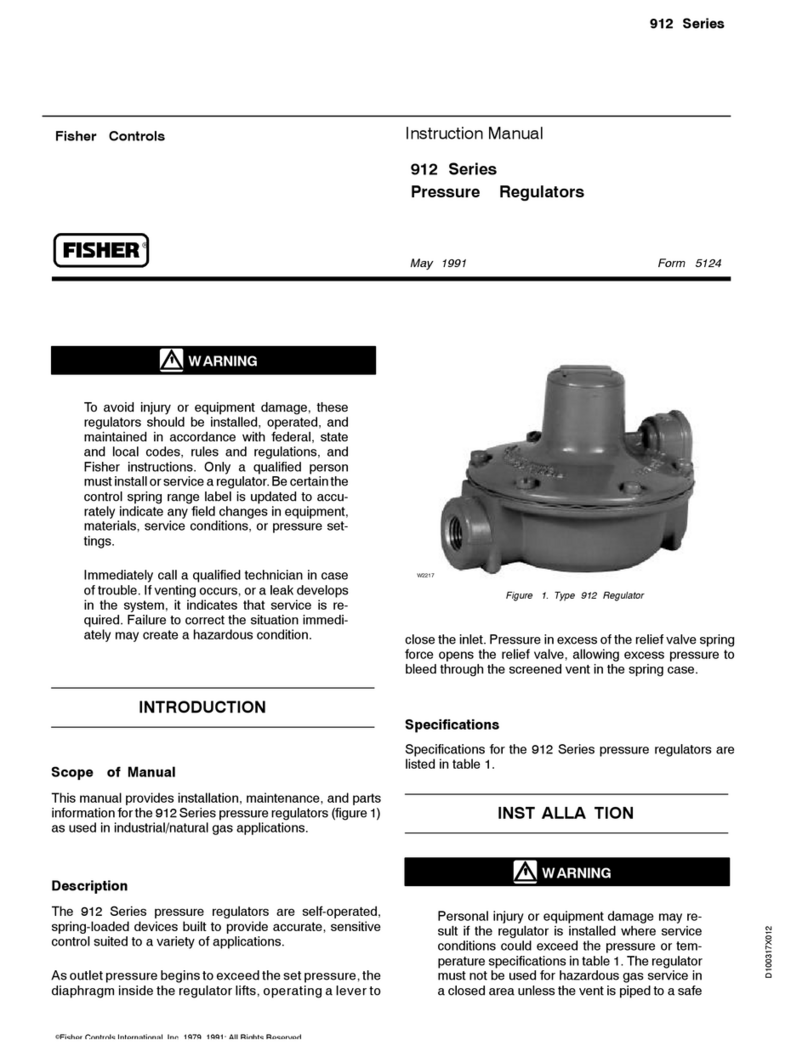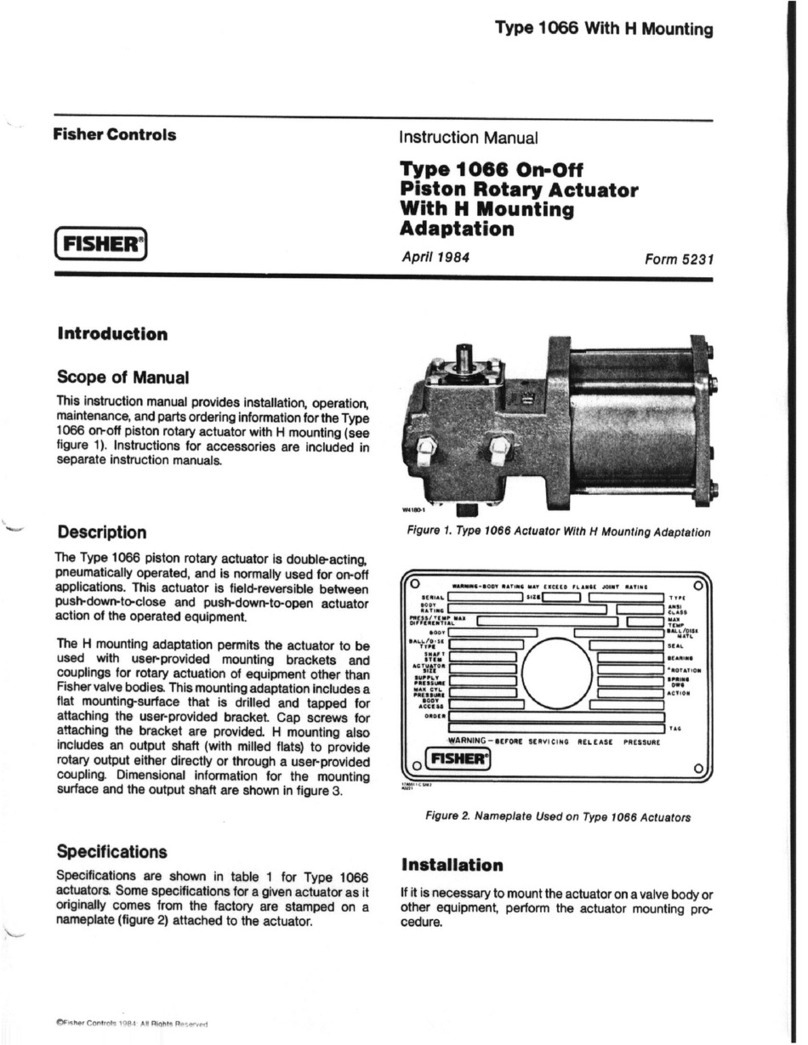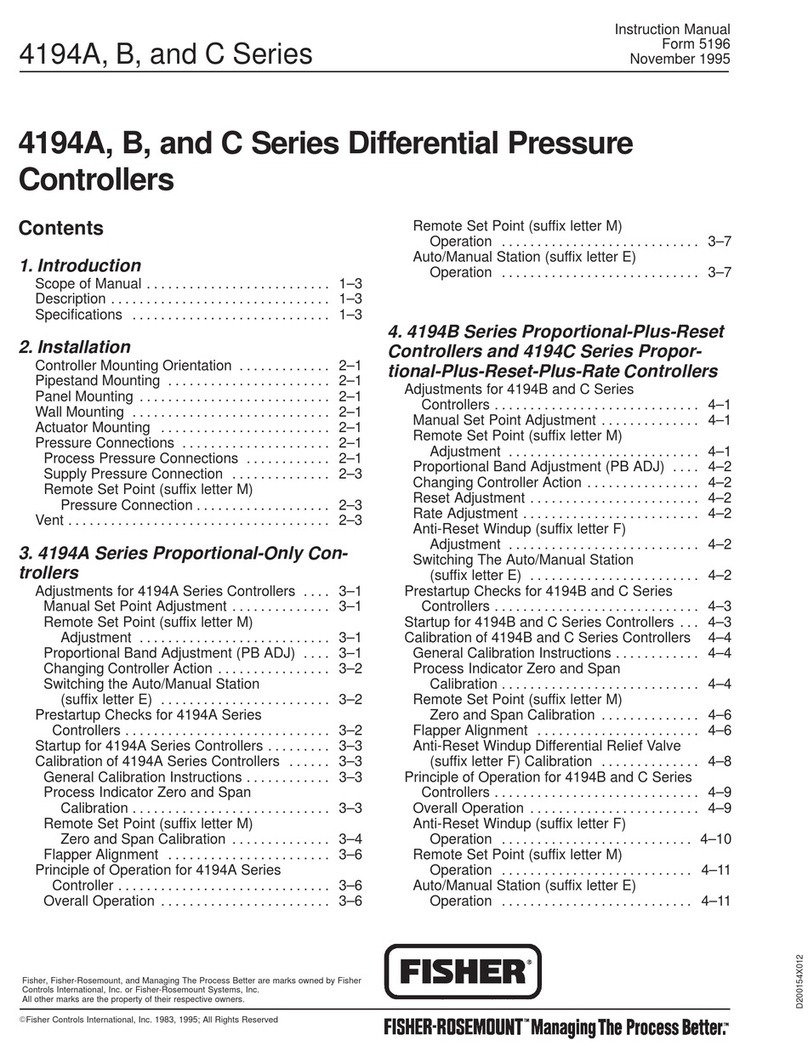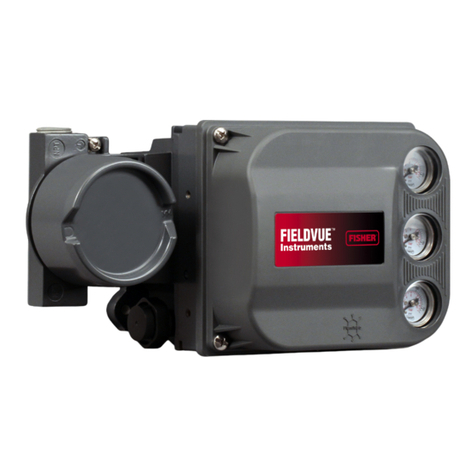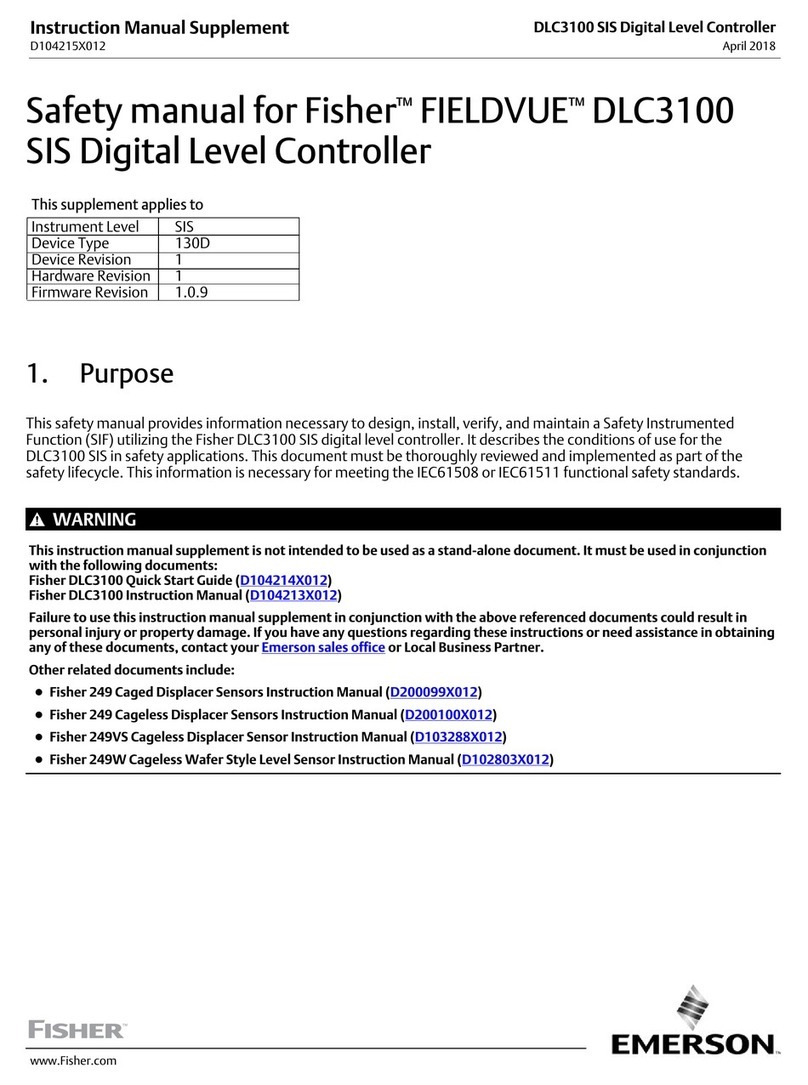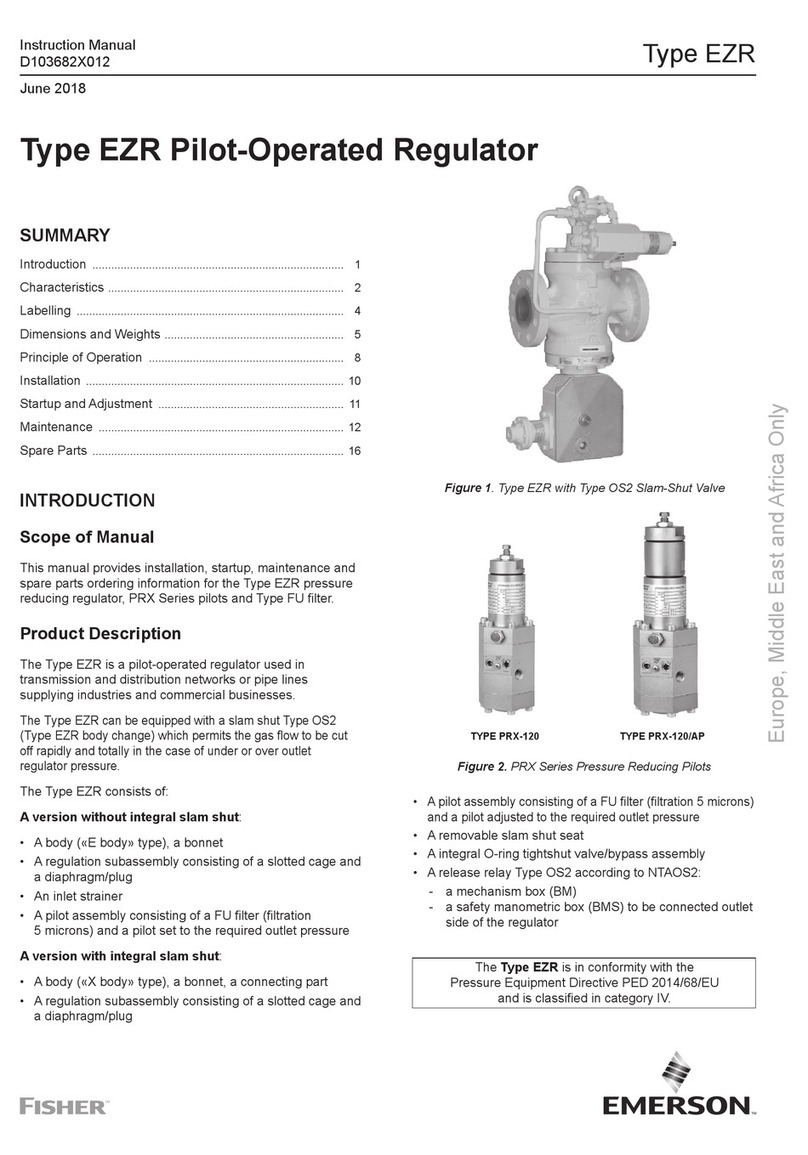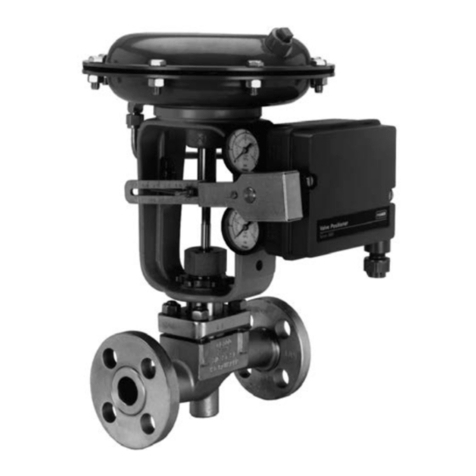
Type 655 and 655R
9
Disassembly
1. Bypass the control valve. Relieve all loading pres-
sure, and remove the tubing or pipe from the hand-
wheel body.
2. Loosen the hex nut (key 27, figures 6 and 7; key
137, figure 8). Turn the adjusting screw (key 10, figure
5) and the handwheel (key 25, figures 6 and 7; key 51,
figure 8) counterclockwise to relieve all compression.
3. For size 3A and 4A actuators, remove the cap
screws (key 19, figure 5), and lift the handwheel body
(key 28, figure 6) off the actuator.
4. For size 3B through 46 actuators, remove the cap
screws and hex nuts (keys 19 and 20, figure 5), and
then lift off the upper diaphragm casing (key 1, figure
5) and handwheel assembly. To replace the O-ring
(key 139, figure 8) or for ease of handling, separate
the handwheel assembly from the upper diaphragm
casing. This can be accomplished by removing the
cap screws that secure the handwheel assembly to
the upper diaphragm casing (key 33, figure 7; key 141,
figure 8).
5. Turn the handwheel clockwise two or three turns.
Remove the hex nut (key 22, figures 6 and 7; key 54,
figure 8) and washer (key 24, figures 6 and 7; key 134,
figure 8), and lift off the handwheel.
6. Unscrew the locknut (key 27, figures 6 and 7; key
137, figure 8) from the handwheel stem (key 26, fig-
ures 6 and 7; key 133, figure 8), and then remove the
handwheel stem through the bottom of the handwheel
body (key 28, figures 6 and 7; key 142, figure 8). A
screwdriver slot in the top of the handwheel stem is
provided for this purpose.
7. Check the O-ring (key 29, figures 6 and 7; key 138,
figure 8), and replace it if necessary.
8. To complete disassembly, drive out the groove pin
(key 31, not shown; key 140, figure 8), and slide the
pusher plate (key 32, figures 6 and 7; key 135, figure
8) off the handwheel stem. For Type 655, size 3B and
4B actuators, a travel stop (key 34, figure 7) should
also be removed with these parts.
Assembly
This procedure assumes that the handwheel assembly
is completely disassembled. If it is not, start the
instructions at the appropriate step.
1. During assembly, apply Lubriplate MAG-1 lubricant
(key 241) or equivalent to the handwheel stem and
threads, the pusher, and to the O-rings as shown in
figures 6, 7 and 8.
2. Slide the pusher plate (key 32, figures 6 and 7; key
135, figure 8) onto the handwheel stem, and, if neces-
sary, insert the groove pin (key 31, not shown; key
140, figure 8). For Type 655, size 3B and 4B actua-
tors, a travel stop (key 34, figure 7) should also be in-
serted on the handwheel stem with these parts.
3. Insert the handwheel stem into the handwheel body
(key 28, figures 6 and 7; key 142, figure 8); then,
screw the hex nut (key 27, figures 6 and 7; key 137,
figure 8) onto the handwheel stem.
4. Install the handwheel (key 25, figures 6 and 7; key
51, figure 8) and washer (key 24, figures 6 and 7; key
134, figure 8) onto the handwheel stem, and secure it
with the hex nut (key 22, figures 6 and 7; key 54, fig-
ure 8).
5. For size 3A and 4A actuators, set the handwheel
body onto the actuator, and secure it with the cap
screws (key 19, figure 5). Tighten the cap screws to
no more than 20 foot-pounds (27 newton-meters) of
torque using an even, crisscross pattern.
6. For size 3B through 46 actuators, set the upper
diaphragm casing (key 1, figure 5) and handwheel as-
sembly onto the actuator body, and secure it with the
cap screws and hex nuts (keys 19 and 20, figure 5).
Tighten the cap screws to no more than 20 foot-
pounds (27 newton-meters) of torque using an even,
crisscross pattern.
7. Connect the pressure control line to the top-
mounted handwheel assembly by following the proce-
dures outlined in the
Loading Connections
portion of
the
Installation
section.
8. To start up and adjust the actuator, follow the pro-
cedures outlined in the
Startup
section of this instruc-
tion manual.
Parts Ordering
When corresponding with your Fisher Controls sales
office or sales representative about this equipment,
refer to the serial number found on the actuator name-
plate (key 17, figure 5). Also, specify the complete
11-character part number from the following parts list
when ordering replacement parts.
